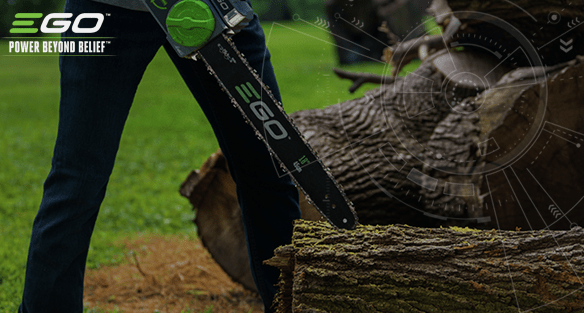There are a number of ways you can recycle wood in your garden or allotment. Whether you’ve used a cordless chainsaw and have a surplus of logs (see our felled cherry tree blog), or you’re tearing up some old decking, there’s a use for all your waste wood.
Whatever you decide to do with it, there’s one thing we can all agree on - choosing to recycle wood in the garden is more productive - and eco-friendly - than taking it to the tip.
How to recycle wood in your garden or allotment
1. Create planter boxes from your old garden shed or decking
The wood panelling from old garden sheds or decking is useful for turning into raised wooden planter boxes for herbs and other small plants like strawberries.
Before you repurpose the wooden panelling, make sure it is not rotten or falling to bits - it needs to take screws and support the weight of the soil.
If you’re keen to build a wooden planter box from your old garden shed or decking, there are tons of videos and blogs showing you how. You’ll need basic tools like a saw to cut the wood to the right lengths - unlike with cutting branches, we don’t recommend using a cordless chainsaw for this as it’s too powerful.
2. Use logs to create raised beds
We recommend using hardwood logs like oak or horse chestnut, which are stronger and will last longer. All wood rots over time, however hardwoods decompose very slowly, keeping your raised beds intact for a long time.
To make a raised bed using logs:
- Mark out the outline of the bed and measure the length and width of it
- Using a battery chainsaw, cut the logs to the size of the bed outline. If you can’t carry logs that are the same size as your bed, it’s ok to cut them into manageable sizes
- Dig a trench along the outline of your raised bed. The trench should be about half the depth of the logs to stop them from rolling around and destabilising the bed
- Throw the soil from the digging outside the raised bed area. Do not throw this away. You will be using it later
- Place your cut logs into the trench all the way around it, making sure the butt of the logs sit snug against each other.
- Fill the raised bed with a bottom layer of manure. On top of this layer fill nearly to the top with compost. Lastly, put your soil from the digging over the compost layer and spread it out evenly, covering the entire surface.
3. Chip the wood for compost or mulch
Twigs, branches and even dead saplings can be chipped through a chipping machine. You can hire one of these yourself or get a professional to do the chipping for you.
Chipped wood can be made into compost or used as a mulch around plants, bushes or trees. To make compost from wood chips, build a pile with your wood chips, and leave it exposed to the elements.
If you’re building the pile during a heatwave, you can kick start the process by watering it. Otherwise, leave it alone for it to be rained on.
The wood chip will decompose in stages, first becoming a rough mulch, then similar to leaf mould and then to a humus. How quickly this happens, depends on the size of the pile. The bigger the wood chip pile, the quicker it will reduce to a humus, where you can then use it in the garden as a compost.
For a more in-depth guide on how to create compost from wood chips, then read this article by The Guardian.
Alternatively, use your wood chip around the base of plants and trees. Apply a thick, even layer of mulch around the base of the plants. The wood chip mulch helps to retain moisture in a drought, as well as suppressing weeds.
The simplest way to recycle wood in your garden
Recycling wood in the ways outlined above are all great, but what if you don’t have much time?
Simply piling up old wood in a wild area of your garden provides a place for animals like hedgehogs to hibernate over the winter. It’s also a haven for insects which are beneficial for your garden.
This is an especially good use if you have pruned back a lot of your fruit trees over the winter with a battery chainsaw or pole saw and have a lot of pruned wood on the ground.
